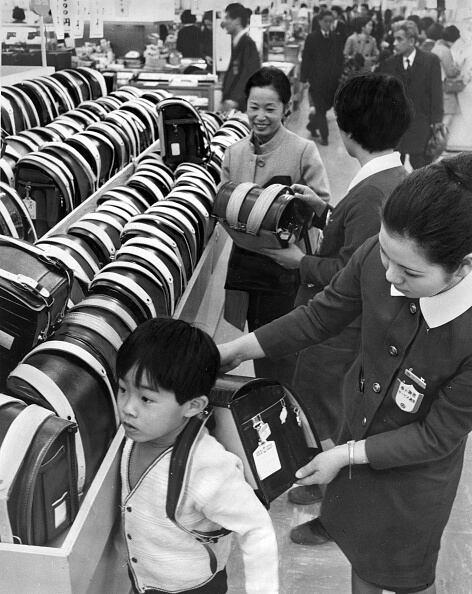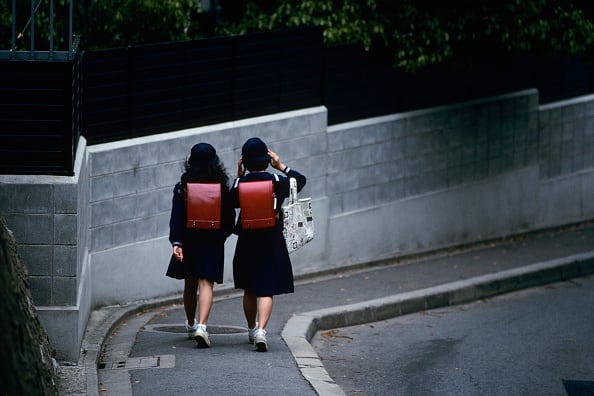The Japanese school year begins in April, marking the start of a new chapter for children across the country. While students in the West are adjusting to the return to school, in Japan, parents of children who will begin elementary school in 2026 are already searching for the backpacks their children will carry. This early preparation is due to the significance of therandoseru, a traditional backpack that has been an essential part of Japanese childhood for nearly 150 years.
Therandoseruis not just any backpack; it holds deep cultural and symbolic meaning. Made from leather or high-quality synthetic materials likeclarino, it is rigid, rectangular, with rounded corners, and features a large flap that opens like an accordion case or a turtle shell. Despite its practical function, therandoseruhas almost totemic status. Although it is not compulsory, virtually all boys and girls use it throughout their six years of elementary school.

One of the most popular brands isSeiban, which has been producingrandoserusince 1946 with minimal design changes. Other long-standing manufacturers, such asKunio Tsuchiyain Tokyo (since 1965) orYamamoto Bag(since 1969), continue this meticulous, almost ritualistic artisanal tradition. Eachrandoserurequires around 150 manual processes, including cutting, assembling, sewing, molding, and polishing, taking about 20 to 30 hours of work. In small workshops, a craftsman may only complete a fewrandoseruper week.
The average price of arandoseruis around $400, but some models can cost nearly $1,000. Another renowned workshop isTsuchiya Kaban, which has been makingrandoserubags since 1965. According to Suzuki, who runs one of the workshops in Tokyo, the key to creating arandoseruis achieving a balance between durability and beauty. His workshop employs around 100 artisans, and he emphasizes meticulousness, detail, and tradition in his craft. “We want each owner to feel a connection with their backpacks every time they use them,” he explains. Prices range from around $530 to $1,270 for the most exclusive models.
A few days ago,The New York Timeshighlighted the cultural significance of therandoseru, noting that it is more than just a bag—it is a symbol of Japanese social discipline and coherence. Although some design liberties are allowed today, therandoseruremains largely unchanged. According to theRandoseru Association, boys often prefer black, while some choose green or camel, and fewer opt for navy blue. Among girls, the traditional red is gradually giving way to lavender or violet, with other shades like peach and sky blue gaining popularity. The classic school bag is slowly becoming a reflection of each child’s personality.

The clean, solid, and elegant aesthetic of therandoseruhas spread far beyond Japanese schools. When Max, then three years old, walked into his kindergarten in San Sebastián, Spain, his beautiful redrandoserustood out among the other children’s backpacks. His parents were captivated by the image of children walking to school independently, all carrying the same backpack. “It was a demonstration of incredible autonomy,” says Maite, Max’s mother. “We were fascinated to see how, on the little ones, it looked like a giant shell and how on the older ones it was perceived as a traveling companion, full of stories.”
They soon realized that therandoseruwasn’t as practical in Spain, where it takes up more space and there isn’t as much room on the bag racks. It is also heavier than a conventional bag, and not everyone knows how to use it correctly. However, the idea of a single backpack that accompanies a child through six years of elementary school resonated with them.
Thousands of miles away in California, architect couple Airi and Rayan chose a mustard-coloredrandoserufor their daughter Kenzo. “A cheerful and welcoming color that perfectly matches her room and her style,” says Airi. Beyond its appearance, the backpack serves as a deep connection to Airi’s cultural roots. Modernrandoserumodels now offer greater capacity for books and digital tablets, but their shape and structure remain largely consistent.
The origins of therandoserudate back to the 19th century, when Japan began opening up to the world after centuries of isolation. Inspired by theransel, a Dutch military backpack, therandoseruarrived in Japan around 1860. In 1885,Gakushuin, the elite school of the imperial family, adopted a similar model as an official backpack. The image of the crown prince wearing it became a symbol of Japanese childhood and discipline.
Initially, therandoseruwas a luxury item for wealthy families, while most continued to usefuroshiki, a cloth for wrapping objects. Over time, therandoserubecame part of the country’s identity. Some companies gave them to their employees for their children, and grandparents began buying them for their grandchildren as special gifts. More than 150 years later, these backpacks remain a fixture in the lives of Japanese children and are more than just a workaday item—they are a cultural classic.



